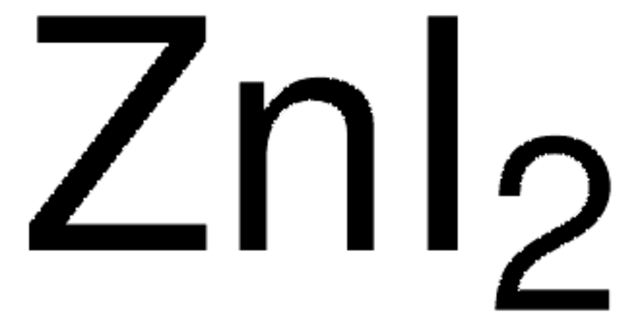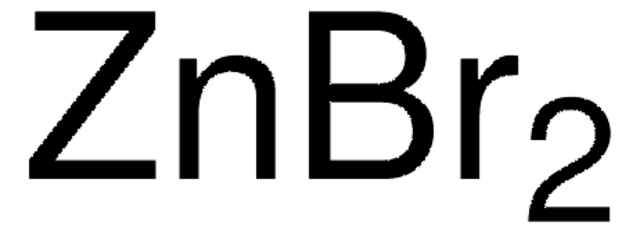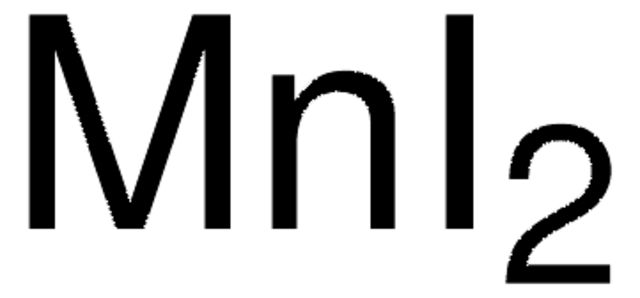Key Documents
230014
Zinc iodide
≥99.99% trace metals basis
Synonim(y):
Diiodozinc, Zinc diiodide
About This Item
Polecane produkty
Próba
≥99.99% trace metals basis
Postać
crystalline
przydatność reakcji
reagent type: catalyst
core: zinc
zanieczyszczenia
≤100.0 ppm Trace Metal Analysis
mp
445 °C (lit.)
gęstość
4.74 g/mL at 25 °C (lit.)
ciąg SMILES
I[Zn]I
InChI
1S/2HI.Zn/h2*1H;/q;;+2/p-2
Klucz InChI
UAYWVJHJZHQCIE-UHFFFAOYSA-L
Szukasz podobnych produktów? Odwiedź Przewodnik dotyczący porównywania produktów
Opis ogólny
Zastosowanie
- An electrolyte in Zinc-iodine redox flow batteries.
- An additive to prepare air-stable cationic lead perovskite films. The addition of ZnI2 enhances the film stability and photoluminescence without affecting the bandgap.
- As a precursor to prepare efficient, eco-friendly, and high color purity inkjet-printed blue InP/ZnS/ZnS quantum dot light-emitting diodes.
- A catalyst in promoting various chemical transformations, for example, in the direct synthesis of 2,3-Dihydroisoxazoles via a [3+2] cycloaddition reaction of the nitrones and terminal alkynes.
- An activator/initiator in living cationic polymerization reactions.
Hasło ostrzegawcze
Warning
Zwroty wskazujące rodzaj zagrożenia
Zwroty wskazujące środki ostrożności
Klasyfikacja zagrożeń
Aquatic Acute 1 - Aquatic Chronic 1 - Eye Irrit. 2 - Skin Irrit. 2 - STOT RE 2 Oral
Organy docelowe
Thyroid
Kod klasy składowania
13 - Non Combustible Solids
Klasa zagrożenia wodnego (WGK)
WGK 3
Temperatura zapłonu (°F)
Not applicable
Temperatura zapłonu (°C)
Not applicable
Środki ochrony indywidualnej
Eyeshields, Faceshields, Gloves, type P3 (EN 143) respirator cartridges
Wybierz jedną z najnowszych wersji:
Masz już ten produkt?
Dokumenty związane z niedawno zakupionymi produktami zostały zamieszczone w Bibliotece dokumentów.
Klienci oglądali również te produkty
Produkty
Colloidal quantum dots (CQDs) are semiconducting crystals of only a few nanometers (ca. 2–12 nm) coated with ligand/surfactant molecules to help prevent agglomeration.
Nasz zespół naukowców ma doświadczenie we wszystkich obszarach badań, w tym w naukach przyrodniczych, materiałoznawstwie, syntezie chemicznej, chromatografii, analityce i wielu innych dziedzinach.
Skontaktuj się z zespołem ds. pomocy technicznej











